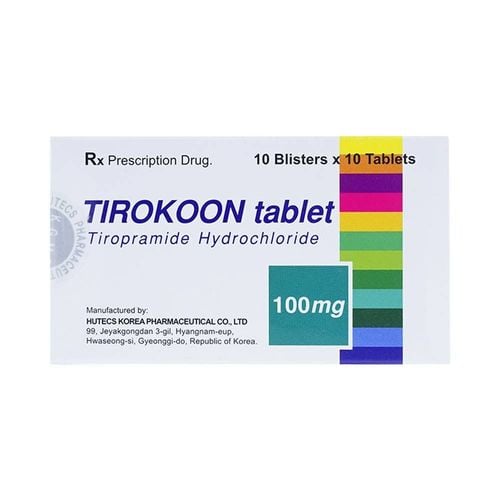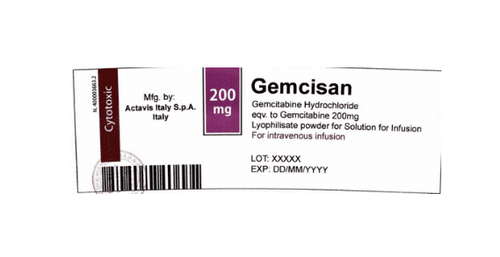This is an automatically translated article.
The article was written by doctors of Internal Oncology - Radiation Oncology Center, Vinmec Times City International General Hospital.Bladder cancer is a disease with a good prognosis if diagnosed early and treated promptly. The disease is more common in the elderly and is more common in men than in women. Clinical reality is still not rare cases of disease diagnosed at a late stage.
1. Bladder Structure
The bladder is a hollow organ in the lower part of the abdomen. It is shaped like a small ball and has a very special muscle layer that allows a larger or smaller volume to store urine produced by the kidneys. There are two kidneys on either side of the spine, above the waist. The small tubes in the kidneys filter and clean the blood, remove waste products, and make urine. Urine passes from each kidney through a long tube called a ureter into the bladder. The bladder holds urine, urine is passed out of the body through the urethraThe urinary tract epithelium is a layer of tissue lining the lumen of the urethra, bladder, ureters, prostate, and kidneys. Cancer that begins in the epithelial lining of the bladder is much more common than in other sites such as the urethra, ureters, prostate, or kidney.
2. Signs and symptoms of bladder cancer
These other signs and symptoms may be caused by bladder cancer or by other conditions. A doctor should be seen if the person has any of the following:Blood in the urine (slightly rusty to bright red). Urinate frequently. Pain when urinating. Lower back pain. Examination Procedure
Before doing some tests. The patient should be thoroughly examined, asked about habits, medical history and past treatments. Vaginal or rectal examination. The doctor inserts a lubricated, gloved finger into the vagina and rectum to feel for lumps. Urinalysis: to check the color of urine and components such as sugar, protein, red blood cells and white blood cells. Urine cytology: a laboratory test in which a urine sample is examined under a microscope for abnormal cells.

Bệnh nhân ung thư bàng quang thường có triệu chứng đau khi đi tiểu
3. 3 types of cancer that start in the urinary tract epithelial cells of the bladder
Transitional cell cancer: Cancer that begins in the cells in the innermost layer of the bladder. These cells can stretch when the bladder is full and contract when it is empty. Most bladder cancers start in transitional cells.Transitional cell cancers are classified as low or high malignancy :
- Low malignancy transition cell carcinomas often recur (come back) after treatment, but rarely spread into the muscle layer. bladder or to other parts of the body.
- High-grade transitional cell cancer also often comes back (come back) after treatment and often spreads into the muscle layer of the bladder, to other parts of the body, and to the lymph nodes. Almost all bladder cancer deaths fall into this group
Squamous cell carcinoma: Cancer that forms from squamous cells (thin, flat cells that line the bladder wall). Cancer can form after a long period of cystitis.
Adenocarcinoma : Cancer that starts in the glandular cells. Glandular cells from the epithelial layer of the bladder produce
4. Bladder Cancer Risk

Hút thuốc lá làm tăng nguy cơ mắc bệnh ung thư bàng quang
5. The following tests can help detect bladder cancer early
Hematuria (red blood cells in the urine) can be caused by cancer or other conditions. This is one of the earliest signs of damage. However, it will not be visible to the naked eye and needs to be tested.Test to check for blood in a urine sample by looking at it under a microscope or using a special test strip. This test should be repeated from time to time.
If there are red blood cells in the urine, the patient should have a cystoscopy and some other tests such as magnetic resonance imaging, CT/Scan scan...
Cystoscopy: is a way to look at inside the bladder and urethra to check for abnormalities. A cystoscope (a thin, lighted tube) is inserted through the urethra into the bladder. Tissue samples may be taken for biopsies.
Urine cytology: Urine cytology is a laboratory test that takes a sample of urine and is examined under a microscope for abnormal cells.
This test may give inaccurate results such as false positives when there appear to be abnormal cells even though there is no cancer. False-positive test results can be worrisome and are often followed up with a variety of other tests (such as cystoscopy or other invasive procedures). False-positive results usually occur when there is blood in the urine but are caused by conditions other than cancer.
This test may give inaccurate results such as false negatives: when no abnormal cells are seen but bladder cancer is indeed missed. A person who receives a false-negative test result may have delayed or delayed treatment even if symptoms are present.
Biopsy: for bladder cancer is usually done during cystoscopy. It is possible to remove the entire tumor during a biopsy.
Once cancer is confirmed, several other techniques are done to find out if cancer cells have spread in the bladder or to other parts of the body. Patients will be taken CT/Scan, magnetic resonance, or PET/CT, bone scan ..
Currently, early cancer screening is considered a perfect measure in timely detection and treatment of all types. cancer. Reduce the cost of treatment and especially reduce the mortality rate in patients. Vinmec International General Hospital always deploys and introduces to customers the Early Cancer Screening Package at Vinmec - Peace of mind to live well to help with gene testing, imaging, testing of biomarkers to detect tumors you early.
Choosing the Early Cancer Screening Package at Vinmec - Peace of mind at Vinmec, customers will get:
Only one gene test can assess the risk of 16 common cancers in both men and women ( Lung cancer, colorectal cancer, breast cancer, pancreatic cancer, cervical cancer, stomach cancer, prostate cancer, ....) Early detection of early signs of cancer cancer through imaging, endoscopy, and ultrasound. The operation is simple, careful and accurate. A team of well-trained specialists, especially in oncology, are capable of handling cancer cases. With a system of facilities, advanced and modern medical equipment and a team of doctors with deep expertise and experience, it will help the examination and treatment process of patients at Vinmec become faster with High efficiency, save cost and time.
Please dial HOTLINE for more information or register for an appointment HERE. Download MyVinmec app to make appointments faster and to manage your bookings easily.
Source NIH 2019












